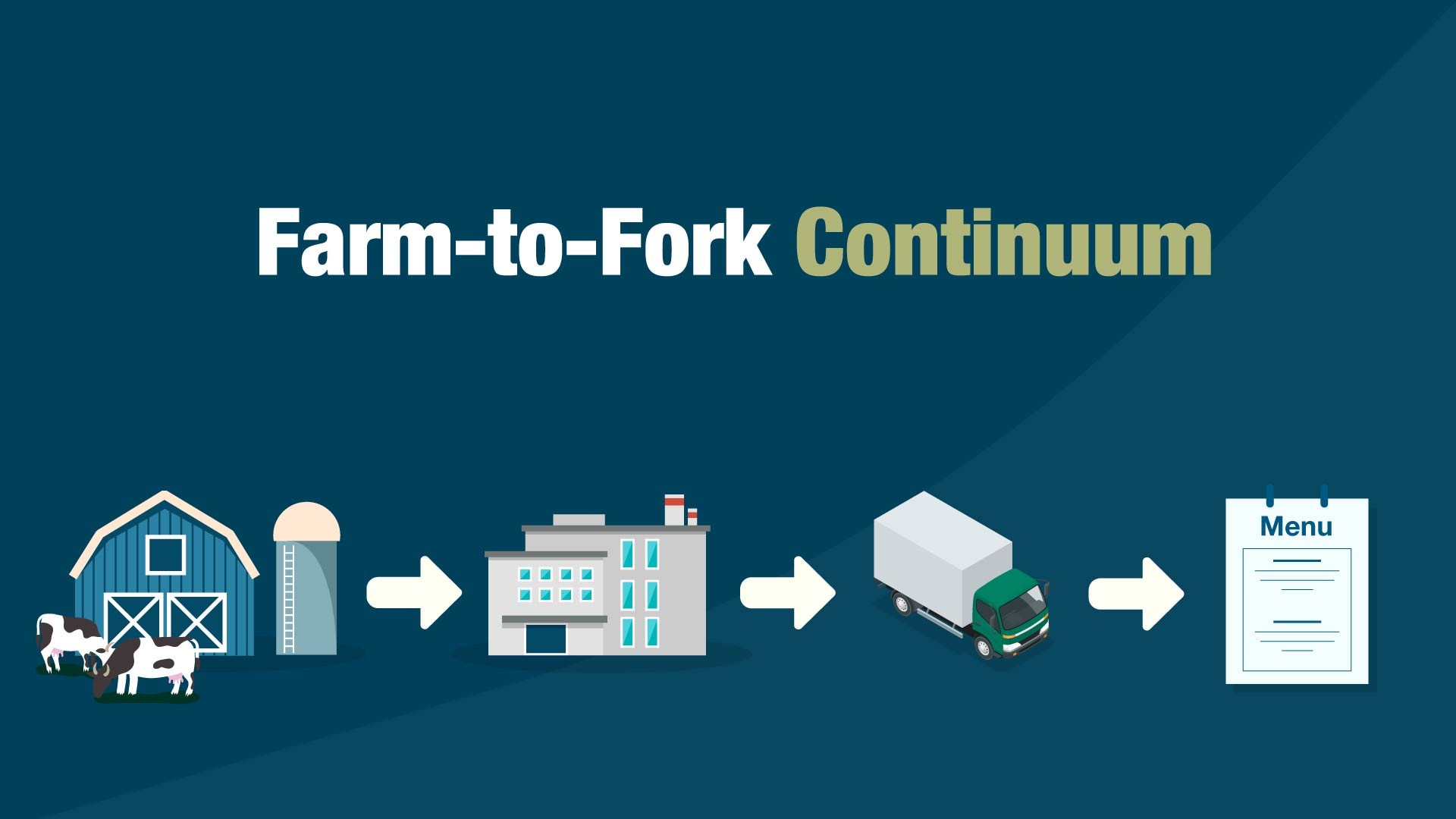At a glance
System theory seeks to understand a system as a whole rather than study individual parts. Focus on the food safety system to better understand how and why outbreaks happen.

Overview
Determining how and why foodborne illness outbreaks happen can be challenging because of the many steps food takes from its original source to the place where it is eaten. At any step along the path, something could happen to introduce contamination to the food, which could trigger an outbreak.
The path that food takes is a system, and each stop along the path is also a unique system (for example, the restaurant system). System theory focuses on understanding a system as a whole, along with the underlying interactions of all the forces that make up that system, rather than dissecting a complex process and studying the individual parts. In system theory, it is important to remember the whole is more than the sum of its parts, and a change in one part of the system may affect the other parts or the whole.

In general, systems are usually made up of the following elements:
- Input: the energy or material that goes into the system
- Processes: what happens within the system that changes the input
- Internal system variables: factors that exert positive, negative, and neutral effects on all other aspects of the system
- Output: what results from the processes
- Outcome: what happens as a result of the outputs
- Feedback: information that can be used to evaluate and monitor the system
Farm-to-fork continuum

The farm-to-fork continuum is a system, and each step along the path is also a unique system. The major steps — and systems — along this continuum are source, processing and manufacturing, distribution, and point of final service. Outbreak investigators can look at these systems to understand how and why an outbreak happened.
- A farm where produce is grown
- A body of water where fish are harvested
- A dairy farm or beef cattle operation
- With produce, this includes everything from washing and preparing it for sale
- Pasteurization
- Low-acidity canning
- Everything from storage and warehousing, repacking, reprocessing, and transport to the next point in the continuum
- Sometimes distribution involves multiple points
- Delis
- Cafeterias
- Restaurants
- Grocery stores
Looking at the restaurant as a system

Within a restaurant system, each step can influence the outcome (customer health):
- Inputs, such as ingredients, organisms, chemicals
- Processes, such as storing, preparing, cooking, and serving
- Internal system variables, such as food workers, equipment, and economics
- Output, the final food item that is served to the customer
- Outcome, such as customer health and satisfaction, profit gain or loss
- Feedback can help inform how processes and variables should change
Outbreak example: system theory in action
Use system theory to stop outbreaks
Let's say a norovirus outbreak happened because a food worker was sick (contributing factor). The investigator would try to find out why (root cause) the worker was working while sick. Those reasons could include
- The worker would not get paid if he didn't work.
- His manager said she could not find anyone to work his shift.

After determining how and why the outbreak happened, the investigator can make informed recommendations to the restaurant for preventing another outbreak. The investigator might recommend that the restaurant
- Provide opportunities for those who miss work because they were sick to make up their hours.
- Train workers on the importance of not working while sick.
- Schedule an on-call worker to be available in case another worker is sick.
Explore our resources
Read more about system theory
Read about how the systems approach has been used to investigate foodborne and waterborne outbreaks:
- Dippold L, Lee R, Selman C, Monroe S, Henry C. A gastroenteritis outbreak due to norovirus associated with a Colorado hotel. J Environ Health. 2003;66(3):13-7
- Gelting R, Sarisky J, Selman C, Otto C, Higgins C, Bohan PO, Buchanan SB, Meehan PJ. Use of a systems-based approach to an environmental health assessment for a waterborne disease outbreak investigation at a snowmobile lodge in Wyoming. Int J Hyg Environ Health. 2005;208(1–2):67–73.
- Selman CA, Guzewich JJ. Public health measures: environmental assessment in outbreak investigations. In: Motariemi Y, editor. Encyclopedia of food safety. 1st ed. Waltham, MA: Academic Press; 2014. p. 98-106.



